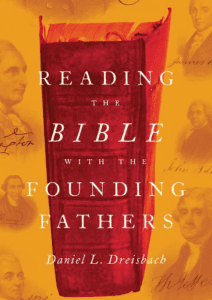John Lennox, professor in Mathematics at Oxford, in his new and wonderfully written book, Seven Days That Divide the World: The Beginning According to Genesis and Science, examines the age-old, ever divisive — and yet wintergreen in piquing our interest — issues in the science and faith/Bible debates. My sentence, the one I just wrote, is hopelessly complex. Lennox has learned to write, and that Zondervan bundled up this little book into an attractive format, makes this a delightful book both to hold and to read.
 I really like this statement he makes:
I really like this statement he makes:
The take-home message from Augustine is, rather, that, if my views on something not fundamental to the gospel, on which equally convinced Christians disagree, attract ridicule and therefore disincline my hearers to listen to anything I have to say about the Christian message, then I should be prepared to entertain the possibility that it might be my interpretation that is at fault (32).
Now I said Lennox could write, and that sentence is very complex, but it’s unlike any other I’ve seen in this book. But he’s right, and it’s important to listen to what he’s saying. And it leads me directly to a comment or two. Ah, it’s that “fundamental to the gospel” that gets us all tripped up. What one person thinks is fundamental to the gospel, another person thinks is totally unimportant. No matter that I disagree sharply with Al Mohler on the age of the earth and the intent of Genesis 1 (and 2), I give Mohler “props” for sticking to his guns in thinking that gospel matters matter greatly. He thinks surrendering Adam and Eve to the land of myth or fiction, true myth or true fiction notwithstanding, surrenders too much. As I say, I give him props for that. But Dennis Venema thinks, well, Mohler is just wrong. And Venema thinks otherwise on the Adam and Eve issues of our day.
Questions: Are ancient cosmological statements metaphors, intentional ones, or are they cosmological perceptions of that day? What does this mean for how we view the Bible?
So let me say it simply, in layperson terms: If our views are ludicrous for the scientists, maybe we are wrong.
But this is not a post about Mohler or Venema or Calvin’s controversies for that matter. Instead we’re discussing Lennox’s book.
Lennox’s opening example is that we have learned that our readings of the Bible are wrong in thinking the earth rests on pillars or foundations made of stone or concrete or steel. This all means foundations or pillars are metaphors. He doesn’t quite deal with an issue that many would like examined: Did the authors of the Bible actually believe the earth rested on pillars? Let’s say they did: Does that mean they were wrong? Well, yes. But does that entail that they were limited to the cosmology of their day? Yes to that one, too. Where does that leave us? With a Bible that is historically located and that God chose to use the cosmology of those days and spoke in those ways. Or, is Lennox saying that it was metaphor even to those authors? Now that would be a hard one to prove.
Lennox: “The earth does not have to be at the centre of the physical universe in order to be a centre of God’s attention” (33). He wants to be scientifically accurate in a way that does not compromise the Bible’s authority. Leading him to a major hermeneutical point:
Scripture has the primary authority. Experience and science have helped to decide between the possible interpretations that Scripture allows (33).
I find that point powerfully interesting because while it claims the preeminence of Scripture he hands (or seems to hand) it to science to let us decide which views Scripture allows. Perhaps we could put it differently: sometimes science informs us in such ways that we see the ancient cosmological limitations of the Bible’s writers.
Galileo, Lennox says, teaches us that we need to distinguish what the Bible says from what we think the Bible says. So he’s saying the Bible might be more sophisticated than we think. In other words, it appears to me Lennox thinks the Bible actually sees the earth resting on pillars to be intentional metaphor for something else.
The earth moves, rapidly as it turns out: 67,000 mph. It’s not propped up on pillars, it’s not the center of the universe, and we’ve learned this from science. This leads us to see things in the Bible as either metaphor or cosmological perceptions of the ancient world. There’s a big difference.











